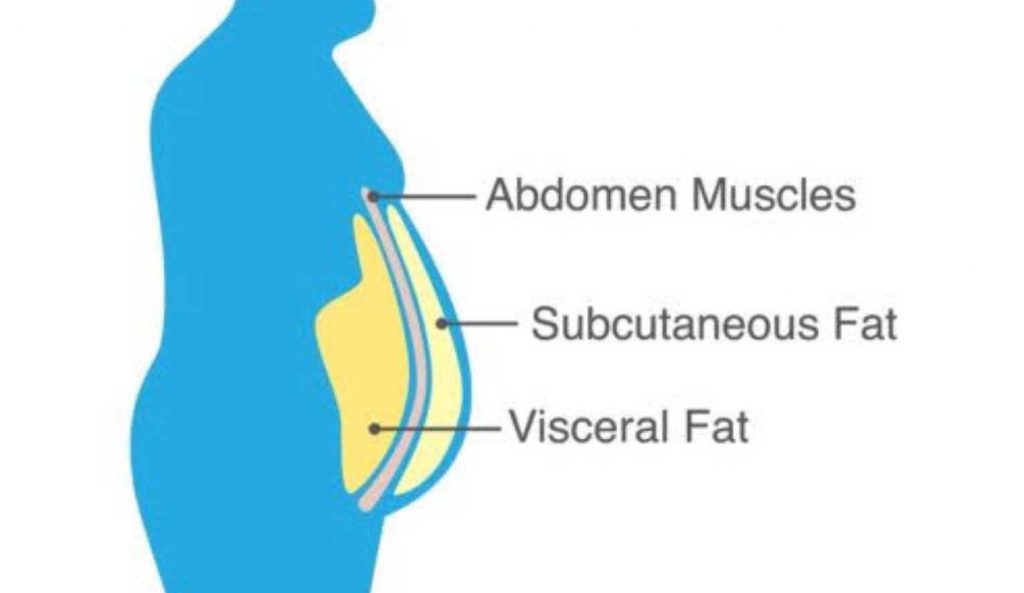The government recommends 5 servings of fruits and vegetables per day, and we’re frequently encouraged to increase our intake whenever possible. But what if most (or all) of those servings are fruit?
Should we add more fruit to a the typical North American’s diet – that’s already far too in carbohydrates (glucose) – and typical North American fitness regimen – that’s already far too sedentary?

Fruits are high in fructose; which unlike glucose, must be processed by the liver.
Obviously this isn’t a a bad thing in small quantities, but when fruit or carbohydrate consumption is excessive, there’s a greater likelihood the liver will convert that fructose to fat. Not only promoting the storage of these fats, but increasing our risk of heart disease significantly – since more circulating fats means more triglycerides.
Research from Harvard Medical School determined that those with high triglyceride and low HDL cholesterol have a 6 times greater risk of heart attack.
Sadly, the high carbohydrate (raises triglycerides) and low-fat (lowers HDL cholesterol) recommendations over the last 50 years have produced an extremely unfavorable Triglyceride-to-HDL ratio for most North Americans to begin with. So adding additional fructose to this daily carbohydrate intake that’s already extremely high raises the likelihood that any additional fruit becomes fat and negatively affects that ratio even more.

As you may have guessed, this extra production of fat is not only bad for our heart, but it’s bad for our waistline. And unfortunately, the fat manufactured from fructose is prone to becoming visceral fat – also known as deep fat, interior fat, heart-attack fat, beer-belly fat, or “the hard stuff you can’t grab because it’s inside with your organs.”
A 2011 study from the European Journal of Clinical Nutrition placed 2 groups of overweight individuals on either a high carbohydrate diet that was predominantly fructose, or a high-carbohydrate diet that was mainly glucose. After 10 weeks, both groups gained fat, but the group eating fructose-based carbs gained mostly visceral belly fat.
Higher levels of visceral fat have been linked to insulin resistance, diabetes, dementia, heart disease and even cancer.

Equally disturbing, is that the fructose-load on the body changes the processing of other foods (specifically carbohydrates). For instance, a 2008 study in the Journal Nutrition gave participants a beverage at breakfast that was either:
– 25% glucose and 75% fructose
– 50% glucose and 50% fructose
– 100% glucose
4hrs after ingestion the production of fat (lipogenisis) in the body was significantly higher after the 75% fructose drink. In fact:
All fructose consumed at breakfast became triglycerides (circulating fat in the blood) and stored as fat in only 4 hours.
But that’s not even the worst part. The same study followed and tested the participants after lunch, and although both groups consumed the same meal, triglycerides remained elevated by nearly 30% in the fructose group. Meaning the carbohydrates consumed at lunch were more likely to be turned into fat, because of the single dose of fructose at breakfast.

Realistically, when you tell someone to eat fruits and vegetables, they eat More fruit and No vegetables. So perhaps 5 serving of fruits is appropriate for someone that’s physically fit and active, but not the majority of the population – who’s already obese, insulin resistant, and sedentary.
A recent study in the British Medical Journal attempted to recommend 7 servings of fruits and vegetables for lowering heart disease, cancer, and mortality. Thankfully, the research did not produce a causal relationship, as adding 7 servings of fruit per day would be disastrous for those already consuming the standard high carbohydrate North American diet. Not surprising, the correlation with mortality and cancer risk in the BMJ study was much stronger for vegetable intake; and when looking at canned and frozen fruit they found a 17% higher risk!
So maybe it’s time to start separating fruits and vegetables in our research and recommendations?

Fruits and vegetables are very different foods that can result in extremely unique outcomes depending on the rest of the diet and the individual consuming it. Take this study from 2011 that looked at the effect of adding 1 serving of fruit to a normal diet. One group of 23 men added a golden delicious apple to their daily routine, while the other 23 added nothing and acted as the control.
After 2 months, the men who ate the apple had higher triglyceride levels and LDL cholesterol than at the beginning of the study.
So maybe an apple a day doesn’t keep the doctor away?
Depending on your current body composition and the rest of your food intake, you may be better off reserving your fruit intake for after workouts. – as this is the time when sugar is directed towards muscle storage instead of fat storage. Plus, this principle (outlined in Live it NOT Diet!) forces you to either choose vegetables over fruit or exercise more.
In any case (currently lean or not), it’s wise to select lower glycemic options (like berries) the majority of the time, and reserve bananas and other high sugar varieties for post exercise.
Stay Lean!
Coach Mike
RELATED ARTICLES:
5 Rules to Foolproof Your Paleo Diet
Why Carbs Are Best Consumed AFTER Exercise
10 Benefits of Low-Carb You Don't Get With Other Diets
5 Servings/Day or 1 Serving/Month - The REAL Nutrient-Dense Food
